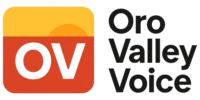National Council on Aging Reports Senior Debt Is on the Rise
A new report from the National Council on Aging (NCOA) shows that senior household borrowing has increased significantly in the past decade, with over 61% of households headed by an adult aged 60+ carrying some form of debt.
Older Adults and Debt: Trends, Trade-offs, and Tools to Help highlights how much of this debt accumulates from the basic costs of living. Findings include:
- Among older households with debt, the median total debt was $40,900 in 2013, more than double what it was in 2001.
- One-third of senior homeowners owed money on a mortgage or home equity line of credit, with 30% owing payments that exceeded one-quarter of their income.
- Senior households taking payday loans increased fourfold from 2007 to 2013 (0.5% to 2.2%).
The report includes findings from a survey of professionals who work with seniors in a variety of community settings. Among those who frequently encounter older adults with debt:
- More than 90% said that medical debt threatened their clients’ financial security, followed by credit card debt (87%) and household utilities (84%).
- Nearly a quarter reported that their senior clients were forgoing needed home and vehicle repairs because of debt.
- They routinely see seniors making financial trade-offs such as splitting pills, skipping medical appointments, and missing rent or mortgage payments.
“The trade-offs that seniors make to manage debt can have serious negative consequences on their health and financial well-being,” said Maggie Flowers, associate director for economic security at NCOA. “We need to recognize that debt is a problem among this population, and help prepare older adults to better manage their future medical, housing, and other daily expenses as they age.”
NCOA offers two tools that can help older adults make the most of their money and the resources available to them. EconomicCheckUp® is a free online service that can help older adults reduce their debt, find work, and cut spending. BenefitsCheckUp®, also free and confidential, screens individuals for programs that can help them pay for health care, food, and household expenses. Since 2001, BenefitsCheckUp® has helped 4.8 million people find over $15.8 billion in benefits.
“We cannot prevent financial crises from occurring,” added Flowers. “As longevity increases, the more vulnerable we become to outliving our resources. But there is support out there, and by educating and connecting older adults to those resources, we can reduce the likelihood they incur debt, so they can stay independent longer.”
About NCOA
The National Council on Aging (NCOA) is a respected national leader and trusted partner to help people aged 60+ meet the challenges of aging. Our mission is to improve the lives of millions of older adults, especially those who are struggling. Through innovative community programs and services, online help, and advocacy, NCOA is partnering with nonprofit organizations, government, and business to improve the health and economic security of 10 million older adults by 2020. Learn more at ncoa.org.

